TomChar
Senior Member
Offline
So the clutch started making a few noises, and then quit altogether. From reading the forums, I thought it might be the release fork pin. I've only had this car for two years now, so before I dug into it, I ordered a new clutch kit, throw-out bearing, and replacement pins for the release fork. After getting all the parts, I started into it, and found a few more things. First there was a little hole in the passenger side of the bell housing, clearly from something coming out. But it was an old hole, so I won't worry about that.
Then once the transmission was out, I found the issues as shown in the photos. The release fork pin was sheared, but also the throw-out bearing was shot, badly enough that it was rotating on the sleeve. The sleeve had a chunk missing - no idea where that went. Just trying to remove the release fork from the shaft was problematic, as the pin was in three pieces and required much beating and heating to remove. As I had never of read of such failures here in the forum, I thought I share them with you. So now I'm awaiting a new release fork and the phosphor bronze sleeve from Moss Motors.
As this is the first LBC transmission I've removed (and will eventually install) I noticed that there aren't any locating dowel pins on the engine block. When I took it apart, I noticed that the bottom edge of the engine plate lined up nicely with the bell housing. I was thinking that a block of wood placed there to slide it on might do the trick. Any other advice for getting this thing back together by myself?
Thanks,
Tom
Then once the transmission was out, I found the issues as shown in the photos. The release fork pin was sheared, but also the throw-out bearing was shot, badly enough that it was rotating on the sleeve. The sleeve had a chunk missing - no idea where that went. Just trying to remove the release fork from the shaft was problematic, as the pin was in three pieces and required much beating and heating to remove. As I had never of read of such failures here in the forum, I thought I share them with you. So now I'm awaiting a new release fork and the phosphor bronze sleeve from Moss Motors.
As this is the first LBC transmission I've removed (and will eventually install) I noticed that there aren't any locating dowel pins on the engine block. When I took it apart, I noticed that the bottom edge of the engine plate lined up nicely with the bell housing. I was thinking that a block of wood placed there to slide it on might do the trick. Any other advice for getting this thing back together by myself?
Thanks,
Tom

 Hey there Guest!
Hey there Guest!
 smilie in place of the real @
smilie in place of the real @
 Pretty Please - add it to our Events forum(s) and add to the calendar! >>
Pretty Please - add it to our Events forum(s) and add to the calendar! >> 
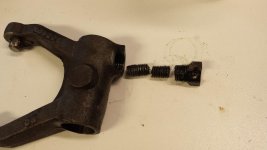
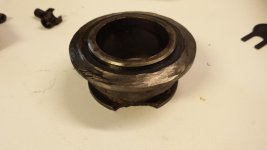
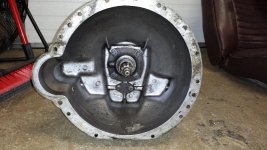
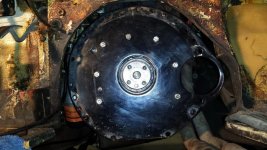
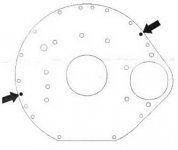
 A friendly reminder - be careful what links you click on here. If a link is posted by someone you don't know, or the URL looks fishy, DON'T CLICK. Spammers sometimes post links that lead to sites that can infect your computer, so be mindful what you click.
A friendly reminder - be careful what links you click on here. If a link is posted by someone you don't know, or the URL looks fishy, DON'T CLICK. Spammers sometimes post links that lead to sites that can infect your computer, so be mindful what you click.